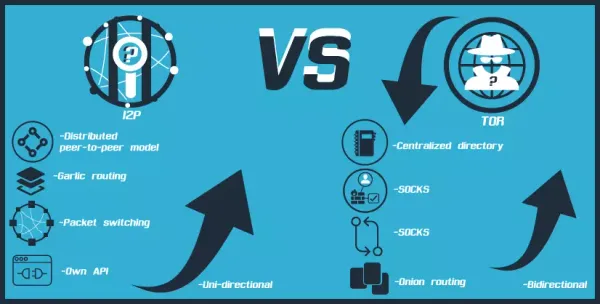ECDH Security Theater, Why Most Implementations Fail
Most ECDH implementations contain fatal flaws that let attackers recover private keys through mathematical manipulation.

Elliptic Curve Diffie-Hellman (ECDH) key agreement has a problem. Most implementations contain fundamental flaws that let attackers completely recover private keys. These aren't theoretical vulnerabilities. They're practical attacks that work against real-world systems right now.
The ECDH Foundation
ECDH lets two parties create a shared secret over an insecure channel. Each party generates a private key (a large random number) and multiplies it by a public base point on an elliptic curve to create a public key. They exchange public keys, then multiply their private key by the other party's public key. The math ensures both parties end up with the same shared secret.
ECDH Foundation: Shared Secrets Over Insecure Channels
The security relies on the elliptic curve discrete logarithm problem. Given a public key (point P) and base point (point G), finding the private key (scalar k) where P = k × G should be computationally impossible. Current estimates suggest breaking a 256-bit elliptic curve key requires roughly 2^128 operations—more than the computational capacity of the observable universe.
RFC 6090 specifies proper ECDH implementation. The key phrase is "proper." Most implementations ignore critical security requirements.
How Twist Attacks Work
Every elliptic curve has mathematical relatives called quadratic twists. These twists share the same field but use different curve parameters. Here's where implementations break: they often fail to validate that received public keys actually lie on the intended curve.
An attacker sends a malicious public key that lies on a quadratic twist instead of the real curve. The victim's implementation performs the scalar multiplication without checking curve membership. The resulting shared secret reveals information about the victim's private key because twist curves often have weaker mathematical properties.
Specifically, twist curves frequently contain small subgroups—mathematical structures where the discrete logarithm problem becomes trivial. An attacker can force the key agreement into these small subgroups, then solve for the private key through simple exhaustive search.
Consider a practical example: P-256 has a twist containing a subgroup of order 4. An attacker sends points from this subgroup, then analyzes the resulting shared secrets to extract private key bits. After enough iterations with different malicious points, the attacker recovers the complete private key.
Invalid Curve Attacks
Twist attacks are just one variant of invalid curve attacks. Attackers can craft points that lie on completely different elliptic curves with deliberately weakened security parameters. These alternative curves might use the same field but have different curve equations that create exploitable mathematical properties.
The attack process is systematic:
- Attacker identifies curves with weak properties (small subgroups, singular points, etc.)
- Generates points on these weak curves
- Sends malicious points as public keys during ECDH
- Analyzes shared secret responses to extract private key information
- Repeats until full key recovery
Some implementations fail so badly they accept points with completely invalid coordinates—numbers that don't correspond to any elliptic curve point at all. These failures often leak private key information directly through error messages or computational side effects.
Invalid Curve Attacks: Systematic Key Extraction
Small Subgroup Attacks
Small subgroups create the most efficient attack vectors. When forced into a subgroup of order n, the discrete logarithm problem reduces to at most n operations instead of the full curve's security level.
For P-256, the full group has order approximately 2^256. But its twist contains subgroups of orders 2, 4, and other small factors. An attacker exploiting the order-4 subgroup reduces a 256-bit security problem to 2 bits of actual work.
The Chinese Remainder Theorem enables combining information from multiple small subgroup attacks. An attacker probes different small subgroups systematically, then reconstructs the full private key from the partial information.
Fault Injection Amplifies The Problem
Physical attackers use fault injection to corrupt ECDH computations deliberately. Techniques include voltage glitching, clock manipulation, and electromagnetic interference that cause predictable errors during scalar multiplication.
Differential fault analysis compares correct and incorrect computation results to extract private key bits. A single bit error in scalar multiplication often reveals the binary representation of the private key directly.
Fault attacks work because elliptic curve scalar multiplication algorithms process private key bits sequentially. Corrupting specific computation steps creates observable differences that map directly to key material.
Implementation Failures Are Systematic
The fundamental problem is that secure ECDH implementation requires more than just basic elliptic curve arithmetic. Critical requirements include:
Point validation: Every received public key must be verified to lie on the intended curve. This requires checking that coordinates satisfy the curve equation and that the point has the correct order.
Constant-time execution: Timing variations leak private key information. All operations must take the same time regardless of key values, requiring branch-free code and careful memory access patterns.
Secure curve selection: Not all elliptic curves provide equivalent security. Curves must resist twist attacks, have complete addition formulas, and provide robust security properties.
Error handling: Computational errors must not leak information about private keys. This includes handling edge cases like the point at infinity and coordinate system exceptions.
Most implementations fail multiple requirements. Popular cryptographic libraries often skip point validation entirely or implement it incorrectly. Timing attacks remain practical against many production systems.
The Surveillance Implications
These vulnerabilities have obvious intelligence applications. State actors can deploy invalid curve attacks against secure communication systems to recover encryption keys. The attacks work against both targeted systems and mass surveillance scenarios.

Corporate surveillance benefits equally. Malicious points can be injected through compromised Certificate Authorities, man-in-the-middle attacks, or direct protocol manipulation. The resulting key recovery enables plaintext access to encrypted communications.
The attack surface extends beyond direct ECDH implementation. Any protocol using elliptic curve cryptography for key agreement, digital signatures, or authentication faces similar risks. This includes TLS, SSH, cryptocurrency wallets, and secure messaging systems.
Testing Reveals Widespread Failures
Systematic testing of cryptographic implementations reveals the scope of the problem. Academic researchers have found twist attack vulnerabilities in major libraries including OpenSSL versions prior to specific patches, various embedded crypto implementations, and hardware security modules.
The SafeCurves project documents curve security properties and implementation requirements. Their analysis shows that many standardized curves, including NIST P-curves, have suboptimal security properties that complicate secure implementation.
Automated testing tools can systematically probe implementations for invalid curve vulnerabilities. These tools generate malicious points on twist curves and alternative curves, then analyze response patterns to identify vulnerable systems.
Defensive Implementation
Secure ECDH requires comprehensive point validation that verifies:
- Coordinates lie within the correct field range
- Point satisfies the curve equation exactly
- Point has the correct order (not a member of small subgroups)
- Point is not the identity element or other exceptional cases
Constant-time implementation demands algorithmic regularity. This means identical execution patterns regardless of key values, branch-free conditional operations, and consistent memory access patterns. Montgomery ladders and other regular scalar multiplication algorithms provide the necessary properties.
Safe curve selection prioritizes mathematical security properties over computational efficiency. Curve25519 and Ed25519 provide superior security properties compared to NIST curves specifically because they resist twist attacks and provide complete addition formulas.
Defensive Implementation: Layered Security Architecture
The Bottom Line
ECDH implementations are systematically broken in ways that enable complete private key recovery. The attacks are practical, well-understood, and work against production systems. Most implementations fail basic security requirements through incomplete validation, timing vulnerabilities, or insecure curve selection.
The surveillance implications are obvious. Any actor capable of injecting malicious points into key agreement can potentially recover private keys. This includes nation-states, corporations, and sophisticated criminal organizations.
Secure implementation requires mathematical rigor that most developers lack. Point validation, constant-time arithmetic, and secure curve selection are non-negotiable requirements that many libraries implement incorrectly or skip entirely.
The solution is not trusting implementation claims without verification. Test your cryptographic implementations against known attack vectors using tools like Project Wycheproof ECDH test suites and ECTester. Use libraries that demonstrate actual security through formal analysis rather than marketing claims. And always assume that crypto implementations are broken until proven otherwise through rigorous testing.
The mathematics of elliptic curve cryptography provide strong security foundations. But implementations consistently fail to realize that security in practice. Until this changes, your elliptic curve crypto remains vulnerable to attacks that turn theoretical security into practical compromise.




